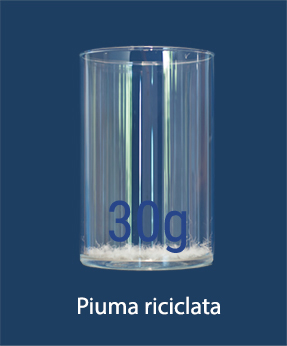Goose
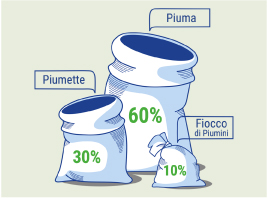
Duck
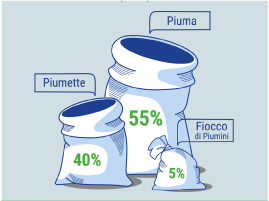
Chicken
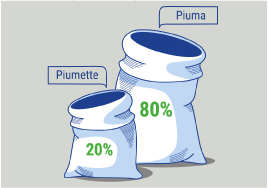
Recycled feather
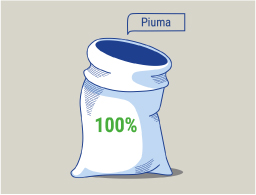
.jpg)
.jpg)
.jpg)
.jpg)
The quality and longevity of these magical goose down clusters vary depending on several factors:
- The age of the animal: the older the animal, the more voluminous its down.
- The habitat in which the animal lives: living space is essential for healthy development (No Factory Farms).
- The animal’s diet: natural foods like grass and grain are certainly better than, for example, industrial fish meal.
- The climate in which they live: a harsh, slightly polar climate promotes the development of voluminous down clusters that serve to insulate the animal against the cold and protect it when swimming in icy waters. This does not happen if the animal lives in warmth. (For all our goose down products, value 20/22cm).
The same factors mentioned for goose down apply to the quality of duck down. Unfortunately, the intense industrialization of the food chain causes ducks to grow quickly in factory farms, feeding them with soy and corn proteins and fish meal. Thus, ducks are already mature after just 6/8 weeks. Consequently, down produced from animals raised in this manner is not very durable, lasting only 5/6 years. Additionally, since the clusters are small, it is necessary to add 30-40% more compared to goose down. Obviously, the down of an "old" Long-tailed duck that has lived in the Arctic sea and fed on mollusks and algae is as magical as that of a goose. (Our Easy down products value 16cm).
This down is often used in addition to duck down to lower the cost of products. Unfortunately, there are large quantities of this product on the market, particularly in China and Pakistan. However, as we have understood, the best filling power of down comes only from aquatic animals (which need to protect themselves from the cold while swimming in the icy waters of the north), and, of course, no one has ever seen a chicken swim!
To further lower product costs, feathers can even be recycled by extracting them from old duvets or down jackets, as is done with GRS Global Recycle Standard certified recycled feathers. Recycling is an excellent practice for the climate problem and makes sense for wool and cotton because good results can still be obtained. However, down clusters and feathers worn out by years of use cannot be revitalized, so products filled with this type of material are of very poor quality.
Average weight 1200g
Average lifespan 20/25 years
Average cost per kg: 250 euro
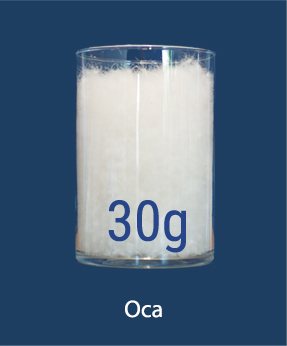
Average weight 1600g
Average lifespan 5/6 years
Average cost per kg: 68 euro (indicative)
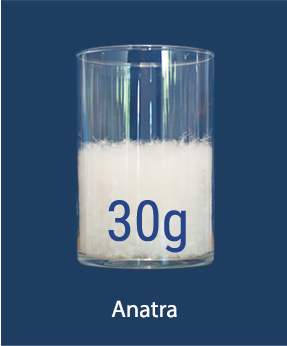
Average weight 5kg
Average lifespan 2 years
Average cost per kg: 17 euro
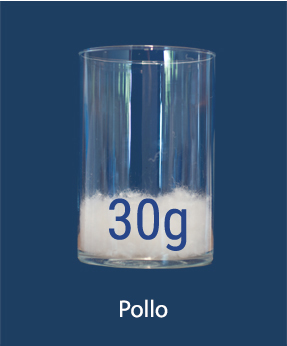
Average weight 5kg
Average lifespan Uncalculable duration
Average cost per kg: 20 euro
